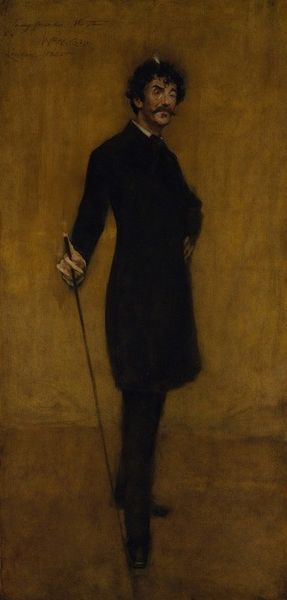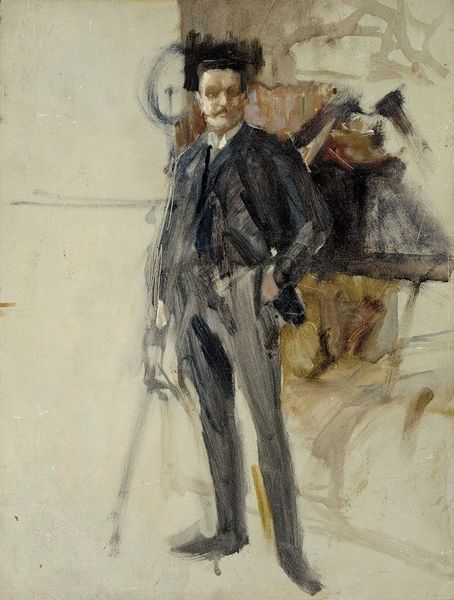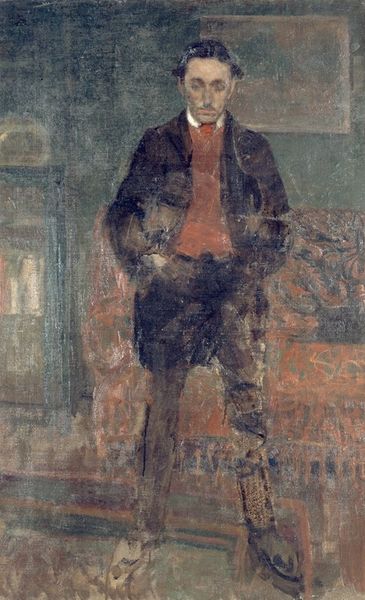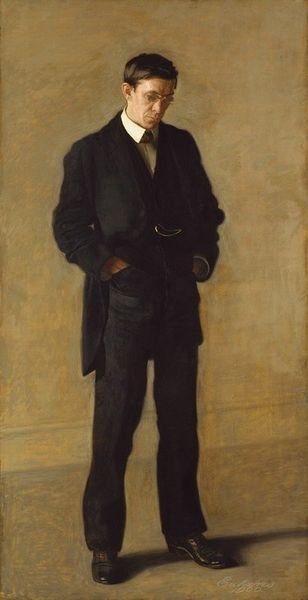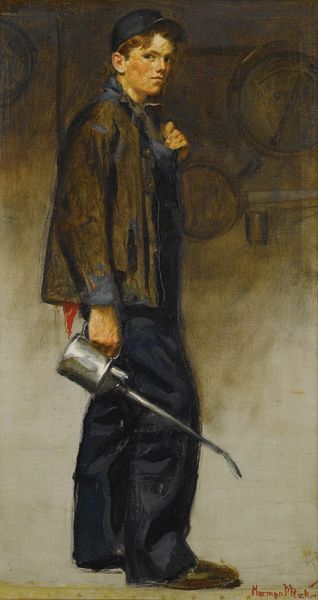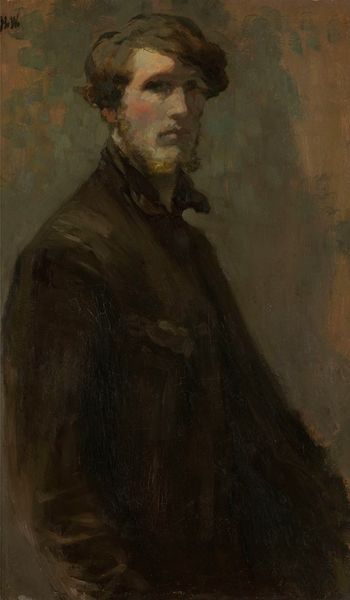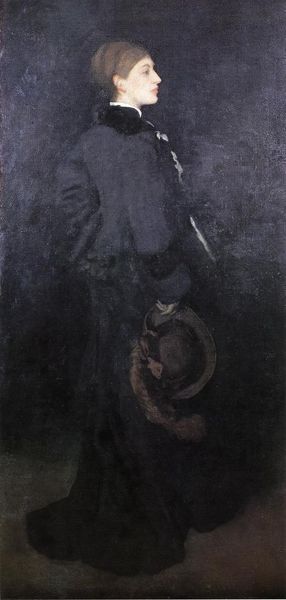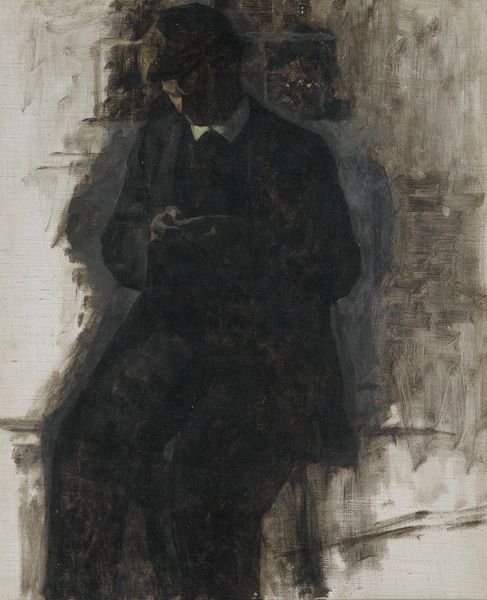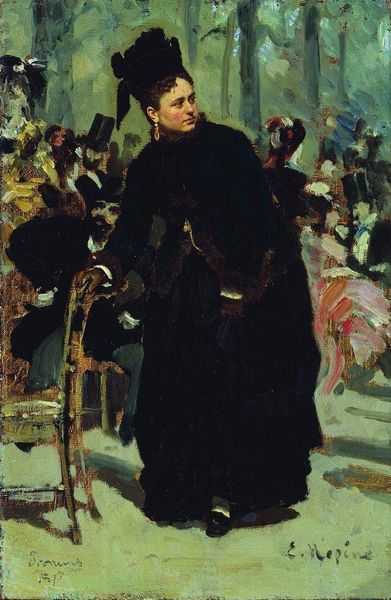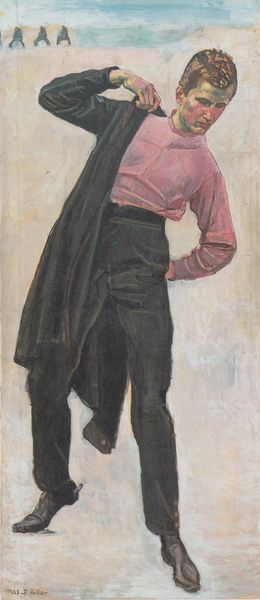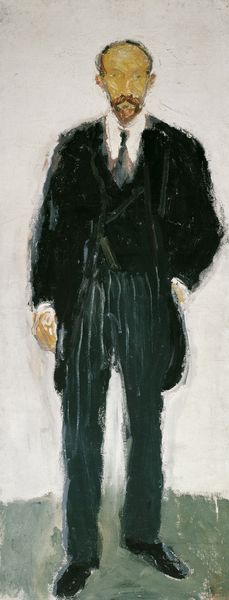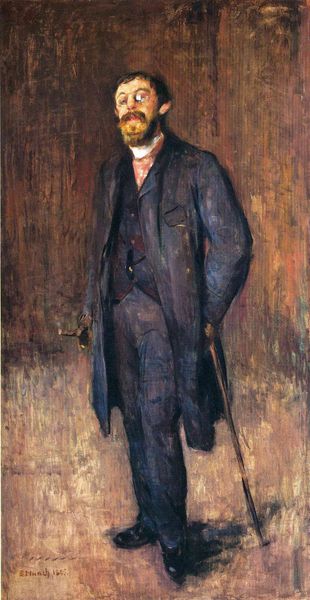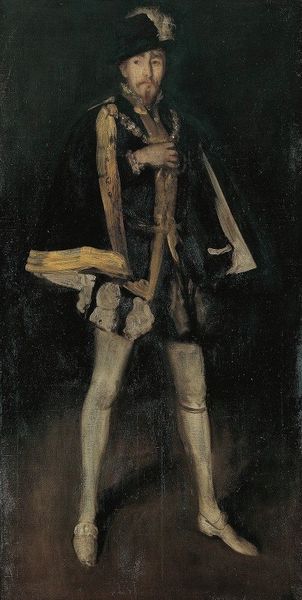
Copyright: Public domain
Curator: Manet’s oil painting, "Portrait of Faure as Hamlet," from 1877 immediately strikes me with its sombre tones. What are your initial thoughts? Editor: A certain theatricality, definitely! But beneath the surface, I sense a more complex commentary about performance, identity, and the male gaze within the operatic world. Curator: Intriguing. Consider the artist's bold brushstrokes and the deliberate use of chiaroscuro—the stark contrast between light and shadow. The flatness, for instance, challenges traditional portraiture. It almost feels like a stage set, which, of course, is relevant. Editor: Absolutely. The loose brushwork also reinforces that sense of “unreality,” and it raises questions about Fauré's own performance of masculinity both onstage and off. Think of how constrained gender roles were in that period. Fauré’s presentation becomes very performative. Curator: The dark clothing, framing the central figure of Faure, evokes a sense of isolation. Notice the impasto, where the paint itself builds up on the surface. There’s materiality to appreciate. The color palette reinforces a tragic sensibility; it gives a particular mood of theatrical angst. Editor: That’s right, and Manet created this portrait at a key moment in French cultural history, when there were massive cultural and political debates about identity and representation in Paris. It reminds us that art does not happen in a bubble and is instead produced in relation to identity politics of gender, race, and class. How did he seek to reflect this turbulent milieu? Curator: The artwork compels the observer to contend with those inherent visual structures, those juxtapositions and absences, that reveal a new means for representing the figure. He used visual construction for psychological conveyance. Editor: By re-examining the portrait within its broader historical context, we can gain a deeper insight into the artist's commentary on opera and performance in 19th-century France. It also urges us to think critically about how contemporary notions about identity inform our perception of this historical figure. Curator: It’s truly rewarding how this portrait pushes viewers to reevaluate accepted structures to realize that art, even art created more than a century ago, is intrinsically about looking beyond the surface. Editor: Yes. Art acts as a continuous reflection of us. We engage with what still touches us about past and present, always with an eye toward what still matters.
Comments
No comments
Be the first to comment and join the conversation on the ultimate creative platform.
